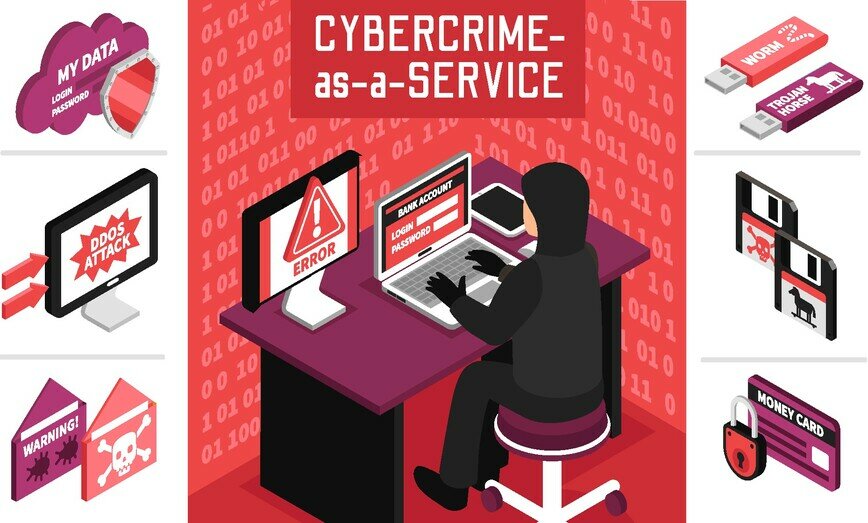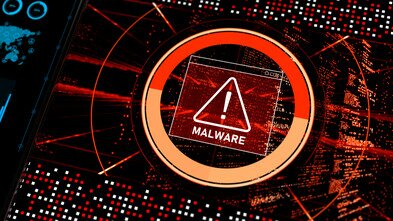Unmasking Cybercrime-as-a-Service: The Dark Side of Digital Convenience
In today's digital age, we have come to rely on the Internet to provide us with unparalleled convenience, access to a wealth of information, and endless services at our fingertips. Unfortunately, not everyone uses the Internet for good and some even sell cybercriminal services online. HKCERT has set Cybercrime-as-a-Service (CaaS) as one of the top five information security risks for 2023. In this blog post, we will dive into the dark underbelly of the online world and explore what CaaS is, its business models, and how it has come to be. We will also provide examples of CaaS and discuss how you can protect yourself from falling victim to these nefarious schemes.

What is Cybercrime-as-a-Service (CaaS)?
CaaS refers to the trend where individuals or groups with malicious intent provide cybercriminal tools, infrastructure, and services to other criminals for a fee. In essence, CaaS has enabled even those with limited technical expertise to engage in sophisticated cyber attacks and other illicit online activities. This has led to the rapid growth and evolution of cybercrime, as it becomes increasingly accessible and profitable for aspiring criminals.
The Business Model of Cybercrime-as-a-Service
CaaS operates much like any other legitimate business, offering various products and services to a diverse clientele. The main difference, however, is that the customers of CaaS are other criminals, and the services provided are all designed to aid in the commission of cybercrimes. Some common offerings in the CaaS marketplace include:
- Malware-as-a-Service: This involves the development, distribution, and support of malicious software, such as ransomware, spyware, or Trojans, which can be used to infect devices and systems, steal sensitive data, or hold data hostage.
- Exploit-as-a-Service: Cybercriminals provide access to previously unknown security vulnerabilities (also known as zero-day exploits) or automated tools that can be used to exploit known vulnerabilities in software or systems.
- Infrastructure-as-a-Service: This service provides access to a network of compromised computers or servers (also known as botnets), which can be used to launch distributed denial-of-service (DDoS) attacks, send spam, or host malicious content.
- Hacking-as-a-Service: In this offering, skilled hackers are hired to breach targeted systems or networks, steal data, or sabotage systems on behalf of their clients.
Why Does Cybercrime-as-a-Service Arise?
The emergence of CaaS can be attributed to several factors. First and foremost, the rapid growth and widespread adoption of the Internet have provided fertile ground for cybercriminals to operate. The anonymity of the online world allows them to hide their identities and evade law enforcement, while the global reach of the Internet enables them to target victims anywhere in the world.
Secondly, the increasing complexity of technology and the expansion of the cyber security skills gap have created a demand for specialised cybercriminal services. As organisations invest in advanced security measures, traditional cybercriminals often find it difficult to keep up with the latest defences. This has given rise to a market for specialised services that can help them bypass these defences and achieve their nefarious goals.
Finally, the lucrative nature of cybercrime, coupled with the anonymity of the dark market, has attracted a growing number of individuals and groups to engage in these illegal activities. The CaaS model allows them to maximise their profits by monetising their skills and resources, while also making it easier for others to join the ranks of cybercriminals due to the lowered cost (e.g. skillset and infrastructure).
Examples of Cybercrime-as-a-Service in Detail
To better understand the threat posed by Cybercrime-as-a-Service, let's examine a few real-world examples:
- Ransomware-as-a-Service (RaaS): One of the most notorious examples of CaaS is the Ransomware-as-a-Service model. In this scheme, cybercriminals develop and distribute ransomware, which encrypts a victim's data and demands a ransom for its release.
RaaS providers typically offer user-friendly platforms that allow aspiring criminals to customise the ransomware, set their ransom amounts, and manage their campaigns. Examples of RaaS platforms include GandCrab, REvil, and Cerber.
- DDoS-for-Hire Services: Distributed denial-of-service (DDoS) attacks are a common form of cyber attack that overwhelms targeted websites or networks by flooding them with an excessive amount of traffic.
DDoS-for-Hire services provide access to botnets, which can be used to launch these attacks on demand. One such service, known as LizardStresser, was operated by the infamous Lizard Squad hacking group and was responsible for numerous high-profile attacks on gaming services and websites.
- Phishing-as-a-Service (PhaaS): Cybercriminals offer a user-friendly interface for even non-technical individuals to create and manage phishing campaigns. These services typically provide pre-built phishing templates, hosting services for the phishing sites, and tools to collect victims' data. Examples of PhaaS platforms include BulletProofLink, EvilProxy and etc
- Dark Web Marketplaces: The dark web is a part of the Internet that is not indexed by traditional search engines and requires special software to access. It is home to numerous marketplaces where cybercriminals can buy and sell various CaaS offerings, such as malware, exploits, or stolen data.
One of the most well-known dark web marketplaces was the Silk Road (shutdown). Transactions are conducted with cryptocurrency. Although primarily known for drug trafficking, it also facilitated the trade of illegal digital goods and services.
Protecting Yourself from CaaS
As CaaS continues to grow and evolve, it is crucial for individuals and organisations to take proactive steps to protect themselves from these threats. Some recommendations for safeguarding your digital assets include:
- Do not engage in any cybercrimes. Do not access to dark web and its marketplace.
- Keep your software and systems up to date to minimise the risk of known vulnerabilities being exploited.
- Use strong, unique passwords for all your accounts and enable multi-factor authentication whenever possible.
- Regularly back up your data to ensure you can recover from a ransomware attack or other data loss incidents.
- Be cautious of phishing emails and avoid clicking on suspicious links or downloading unexpected attachments.
- Invest in comprehensive cyber security solutions, such as antivirus software, firewalls, and intrusion detection systems.
By staying informed about the latest cyber security threats from HKCERT and following best practices for securing your digital environment, you can significantly reduce the risk of falling victim to CaaS and help create a safer Internet for everyone.
Share with



